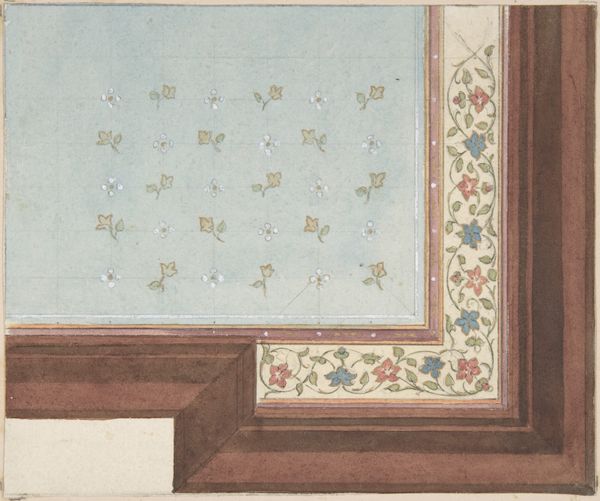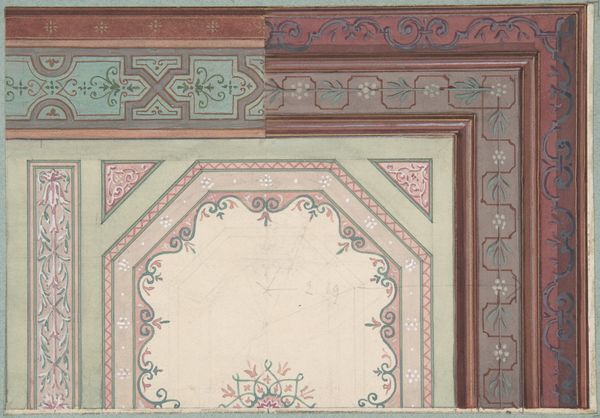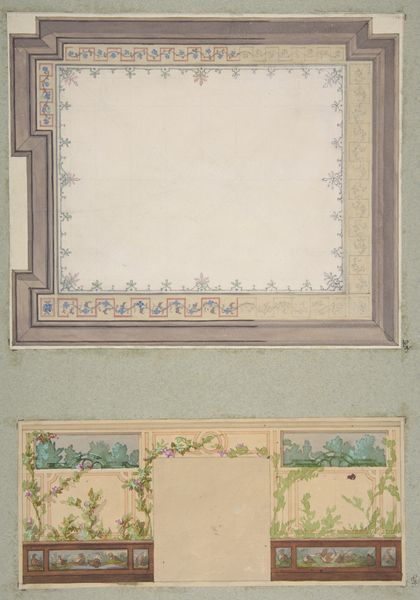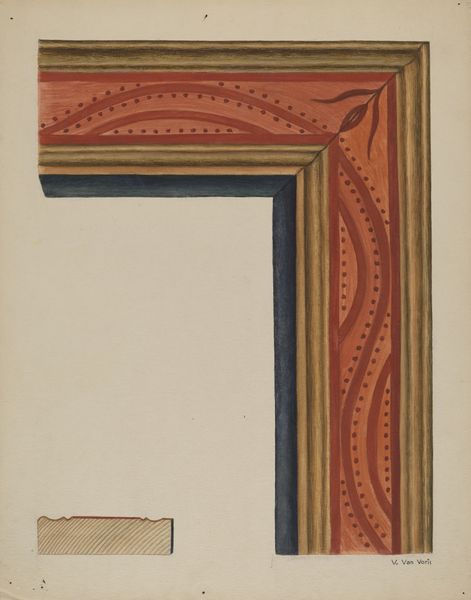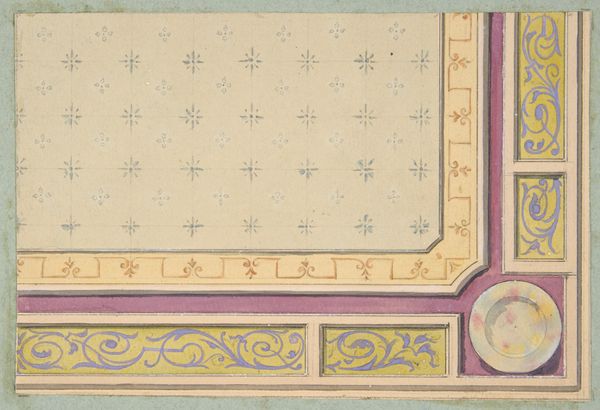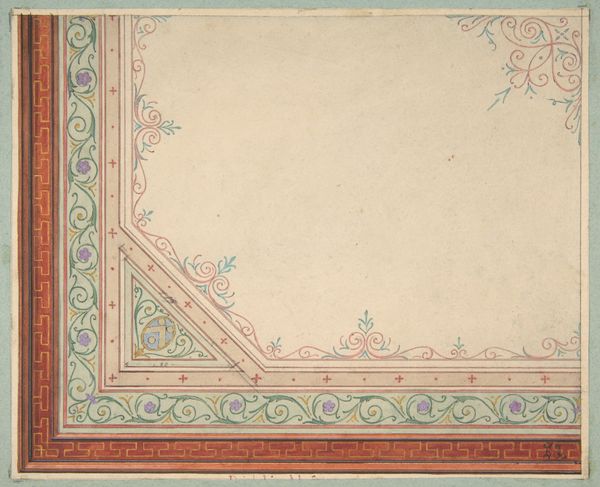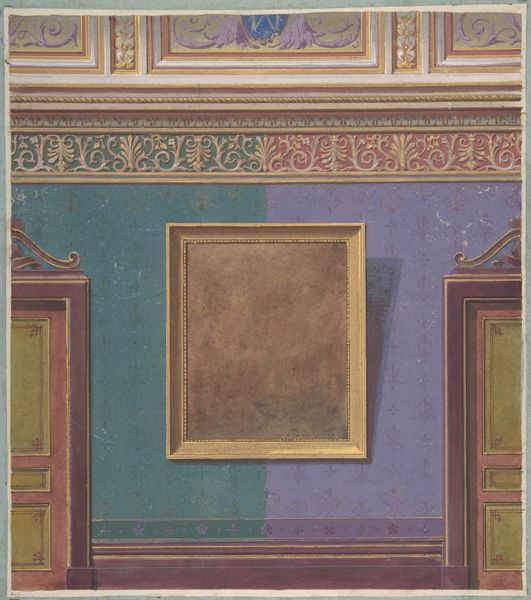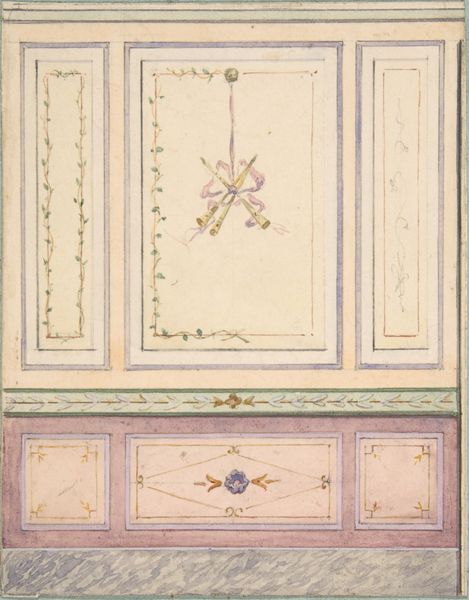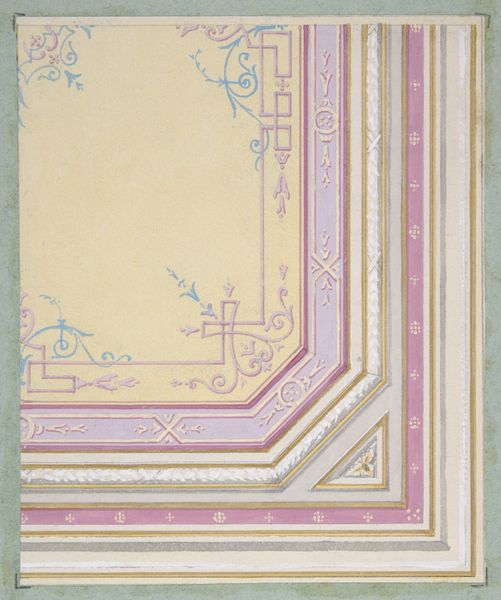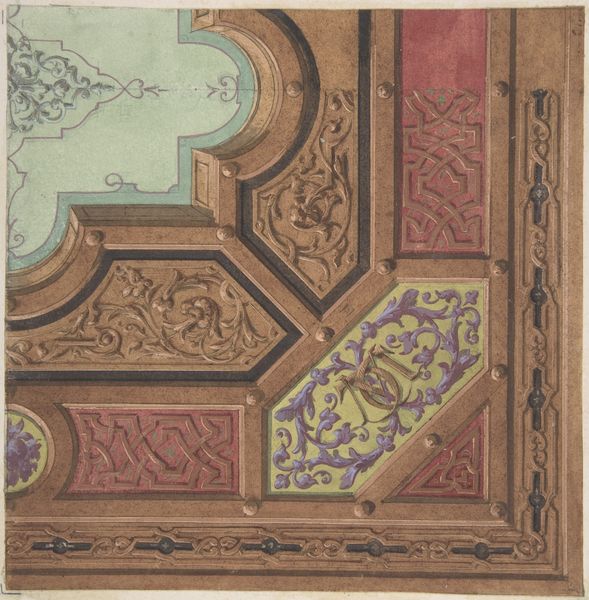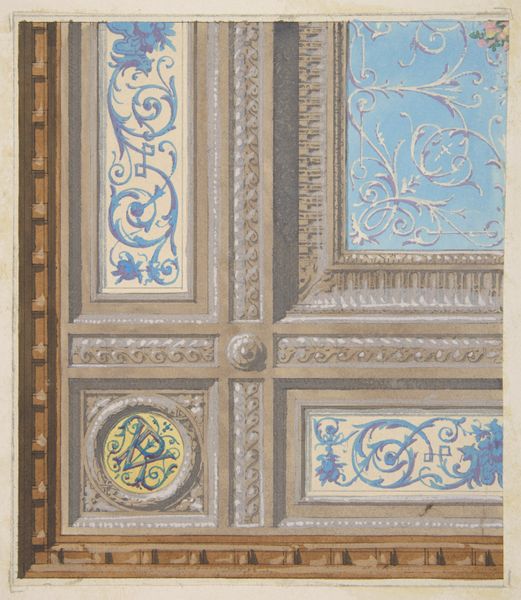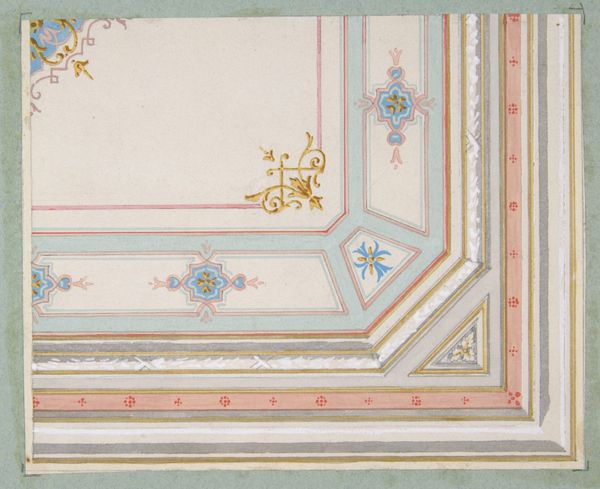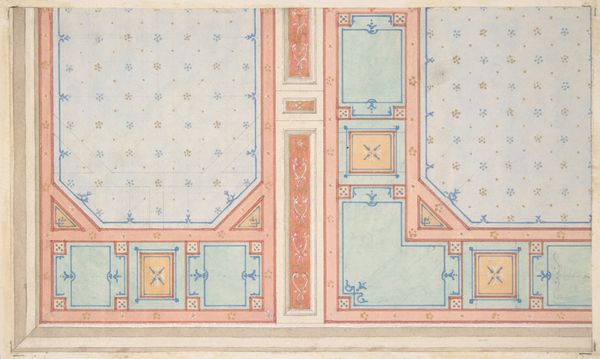
Pompeiian Design for Paneling 1850 - 1900
0:00
0:00
Dimensions: 7 x 5 3/16 in. (17.8 x 13.2 cm)
Copyright: Public Domain
Curator: Ah, look at this. "Pompeiian Design for Paneling" crafted sometime between 1850 and 1900, location of origin and designer are unknown, but preserved at the Metropolitan Museum of Art. Watercolors, mostly, on paper, quite a thing, isn't it? Editor: It feels like looking at a fragment, or a memory of a room. A quiet, perhaps a little melancholic, space. Curator: Melancholic! Because of the muted color palette? I mean, Neoclassicism isn’t exactly known for its vibrant, boisterous emotions. Think more restrained elegance, even when replicated, it's inherently reflective, like a dance with time itself. Editor: Perhaps, though it seems like a very domestic dance! These aren’t frescoes intended for emperors. More likely for some upwardly mobile merchant eager to bring classical themes into his dining room or hallway. One can almost smell the varnish and new paint! Curator: Ah, the aspirational middle class appropriating classical motifs, I suppose. But still, there is a care, even affection, rendered within the act. Look closely. The geometry is so very proper but relieved through hand-painted leaves that slightly disobey their prescribed patterns. Does it hint at mass production? How does that intention interplay with a desire to evoke antiquity and handmade work? Editor: Well, that is exactly the question that it evokes. The crisp, precise linework certainly suggests the possibility of mass production – a printed design, perhaps? And yet those imperfect botanical flourishes hint at a hand attempting to individualize, to elevate the design beyond the merely commercial. Is it truly "art", or merely artisanry? That's where it gets really interesting. It is challenging these delineations that seek to make divisions based on art/non-art criteria. It is a production and decorative system that reflects on labor, processes and means of making during that moment. Curator: It also seems to hint at deeper ideas of humanity’s eternal dance between order and chaos. I guess I am just seeing a feeling of…something deeper and less tangible. Editor: See, to me, it’s deeply *tangible*! This is about the work. Not something "else". Thank you! Curator: Agreed. Material is the meaning and I like that—thank you for guiding me into the present.
Comments
No comments
Be the first to comment and join the conversation on the ultimate creative platform.
